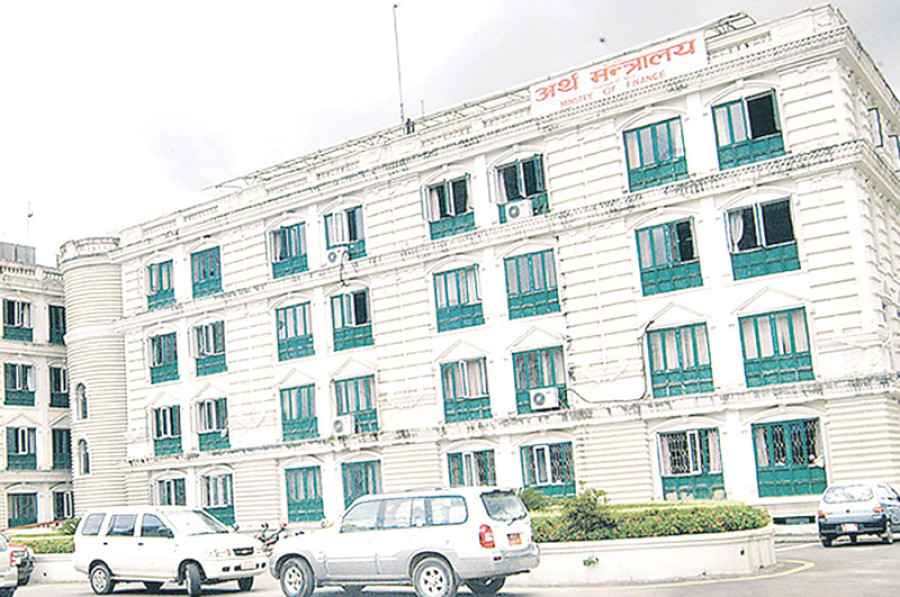Money
Finance Ministry rolls out ambitious economic plan
The Ministry of Finance has rolled out an ambitious economic plan that aims to add 50,000 jobs within this fiscal year, create special purpose vehicles to implement big projects, and introduce project readiness filter to discourage the practice of selecting infrastructure projects in a haphazard manner.
Rupak D. Sharma
The Ministry of Finance has rolled out an ambitious economic plan that aims to add 50,000 jobs within this fiscal year, create special purpose vehicles to implement big projects, and introduce project readiness filter to discourage the practice of selecting infrastructure projects in a haphazard manner.
Introduction of plans like these that generate hopes for a better Nepal is not a new thing in this country. Every year, the government spends days to chart out the future development course “to make Nepal prosperous”. But these plans often gather dust because no one bothers to implement them or monitor their progress even if decisions are taken to implement them.
Hence, development programmes introduced by the government, instead of winning accolades, are viewed as a measure to score political points and gain some cheap popularity.
Perhaps, Deputy Prime Minister and Finance Minister Krishna Bahadur Mahara is well aware of this phenomenon.
So at the outset of the programme organised on Wednesday to launch the action plan on sustainable economic development, Mahara said programmes incorporated in the document were not very new.
“I’ve only tried to ‘centralise’ plans and programmes floated in the past,” the finance minister said.
No wonder, the plan also looks more like a budget implementation action plan introduced pretty late as over six months have elapsed since the fiscal year began.
Had such a plan-which includes deadline for project and programme implementation-been rolled out right after the endorsement of the budget by Parliament six months ago, the government probably would have made significant progress in spending funds allocated for capital projects.
The minister acknowledged that low capital spending was the biggest hurdle for economic development in the country, but he said “we can still do better”. “That’s why the action plan focuses on monitoring and evaluation of projects and programmes,” said the minister.
The 63-point action plan envisages creation of special purpose vehicles to implement 1,200MW Budhigandaki Hydroelectric Project, Kathmandu-Tarai Fast Track, Second International Airport at Nijgad, Postal Highway, intensive urban development programme, smart city project and universal health coverage programme. This initiative, the Finance Ministry hopes, would expedite construction of projects considered strategic for country’s overall development.
The action plan also proposes to introduce project readiness filter to ensure infrastructure projects, from now onwards, are not incorporated in the annual budget document without conducting any study or making any preparation. “This would help ramp up capital spending,” the plan says.
The plan also envisages construction of Kerung-Kathmandu Railway Project, Kathmandu Valley Metro and Mono Rail Projects, Electric Railway Project, Second International Airport at Nijgad, reservoir-type hydroelectric projects with installed capacity of 300-500 MW and expansion of East-West Highway under engineering-procurement-construction-financing model. This project development model, it is said, expedites project completion, as a single party has to complete procurement works, build the project on its own and mobilise necessary funds to build the project as well.
Among others, the action plan proposes to provide easy credit access to vegetable farmers; establish labourers’ bank to create database of workers available for different jobs; generate self-employment opportunities for 50,000 people within this fiscal year; create national single window to facilitate overseas trade; and establish infrastructure development bank under leadership of the private sector.
The proposals sound appealing and if implemented could change the future of Nepal.
But the question again boils down to whether they will ever be implemented? And whether concerned agencies will keep tabs on the progress and evaluate performance once implementation begins?
- Introduce project readiness filter to discourage the practice of selecting infrastructure projects in a haphazard manner
- Provide easy credit access to vegetable farmers
- Establish labourers’ bank to create database of workers available for different jobs
- Generate self-employment opportunities for 50,000 people within this fiscal year
- Create national single window to facilitate overseas trade
- Establish infrastructure development bank under leadership of the private sector




 8.12°C Kathmandu
8.12°C Kathmandu














